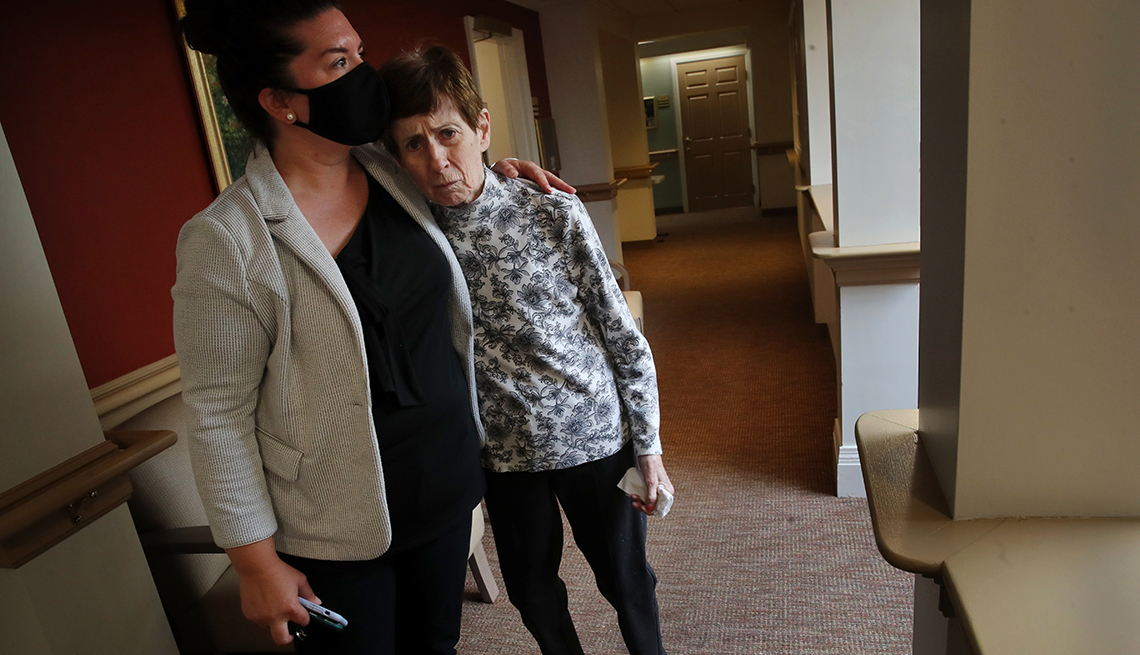
Is assisted-living being forgotten during covid?
- Select a language for the TTS:
- UK English Female
- UK English Male
- US English Female
- US English Male
- Australian Female
- Australian Male
- Language selected: (auto detect) - EN
Play all audios:

CHARTING THEIR OWN PATH When Aegis experienced an early COVID-19 outbreak in one of its Washington facilities in March, it locked down all 32 of its facilities and created a coronavirus
taskforce to study the virus, to implement more infection control, to source and stock PPE, to educate and train staff, and to open up telemedicine. Government tests were hard to come by and
slow to produce results, so the company partnered with a local laboratory for testing. "We've been very aggressive; we marshal every resource and every person in our Rolodex to
give our residents the best care,” says Clark, whose facilities now have just six cases. “We actually called the CDC up and invited them into [our facility]. We said, ‘We want you in here.
We want you to tell us if what we're doing is right'. “ In March, after a COVID-19 outbreak at a health care conference in Boston, LCB Senior Living also took matters into its own
hands. Its two-dozen-plus facilities started stockpiling PPE, partnering with nursing agencies to address staffing shortages, and sourcing private testing to ensure adequate resources. “We
had to chart our own path,” Doyle says. “We couldn't wait around for people to tell us what to do.” All LCB residents are now COVID-free, he notes, though there are a few staff cases.
But acting independently has been difficult for assisted living operators. When it comes to acquiring adequate levels of PPE, for example, competition is high. The supply chain is better
than in earlier months of the pandemic, but shortages persist. “It's the Wild West,” Doyle says. “There are scammers out there saying they've got N-95 masks, which turn out to be
Halloween masks.” It's also costly. According to a survey of 193 providers by the National Center for Assisted Living (NCAL), half are operating at a loss. Sixty-four percent said they
won't be able to sustain another year of operation at the current pace of increased costs and revenue loss. “We're spending what will probably be millions of dollars on
COVID-related issues, from staff training to hazard pay to agency-paid testing to PPE — all kinds of things,” Clark explains. A PUSH FOR FEDERAL HELP Pleas for more support are starting to
be heard in Washington. In early September, after nursing homes had received over $21 billion in federal aid during the pandemic, the Department of Health and Human Services announced that
private-pay assisted living communities could apply for funding through the CARES Act. On the same day, the HHS declared that assisted living communities would receive a portion of 150
million new antigen tests that the federal government purchased. Assisted living was left out of the initial COVID-19 test allocation program. Sen. Elizabeth Warren (D-Mass.), meanwhile, has
introduced legislation to require states to report their assisted living COVID-19 cases, like nursing homes do, before they can qualify for federal relief. Unlike nursing homes, which are
required to report COVID-19 data for weekly public releases, assisted living facilities have no cohesive reporting system. Most states have declined to publicly identify coronavirus cases
and deaths specifically in assisted living communities. So the toll on assisted living facilities is still far from clear. "It's taken a full six months for the federal government
to recognize that assisted living facilities are indeed providers,” AARP's Ryan says. “How many people have died in that time? How many facilities have been short-staffed? How many
people have gone untested? How much asymptomatic spread has occurred?”
